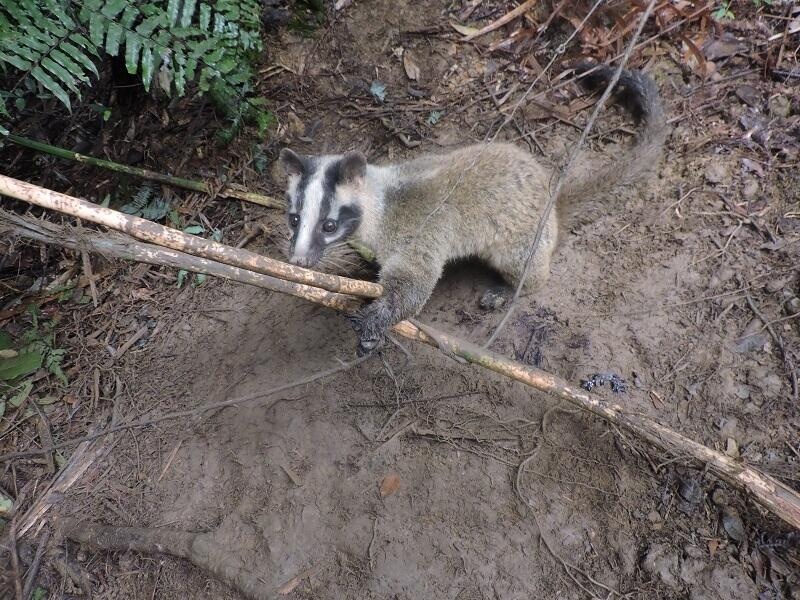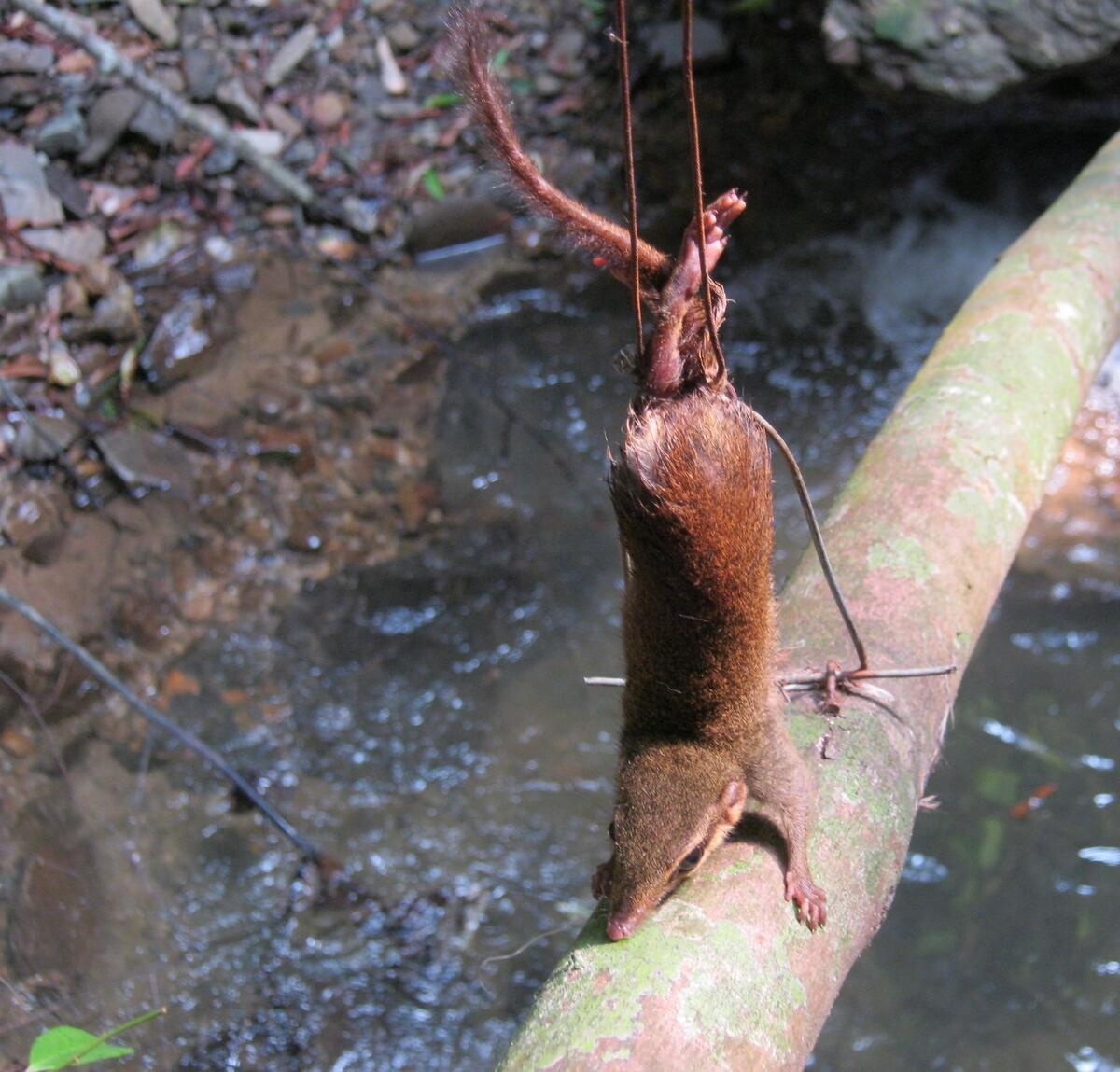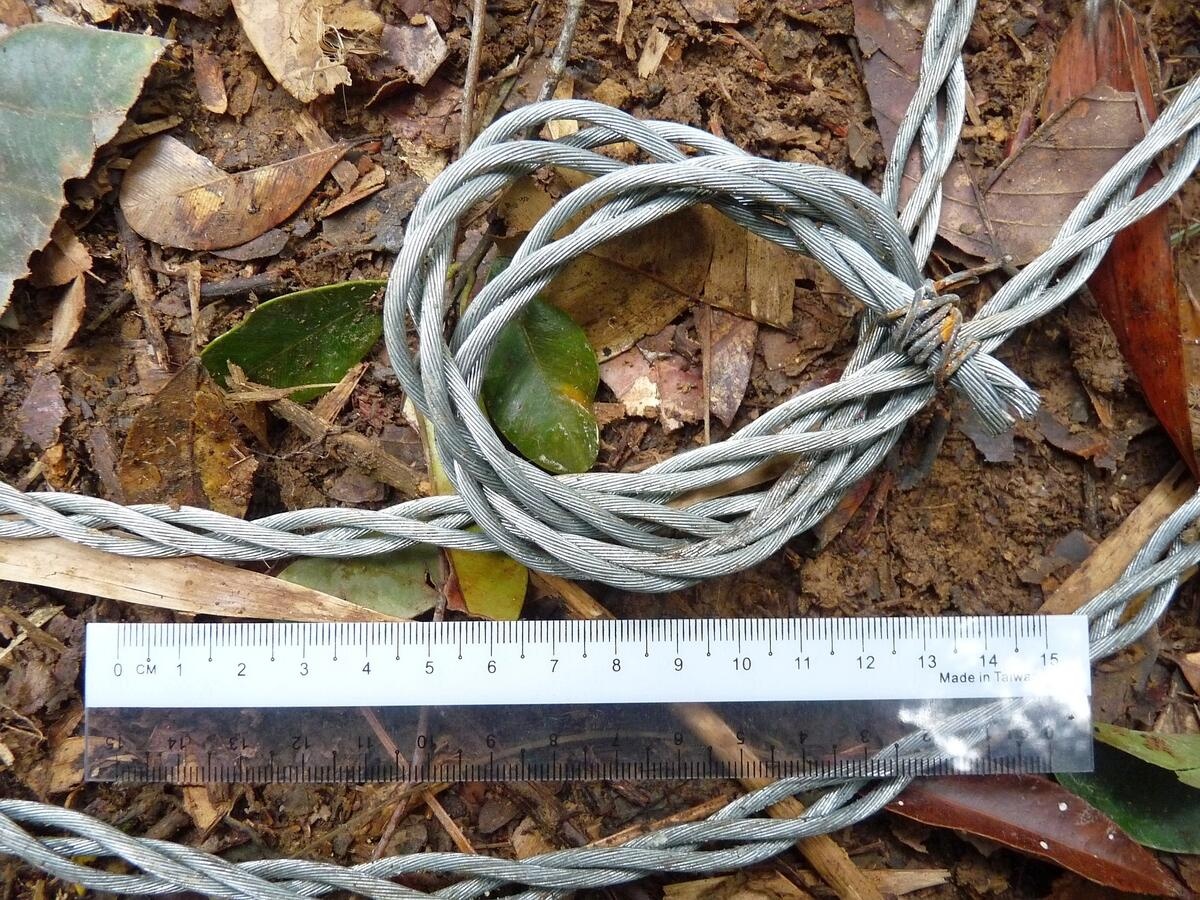Snaring an animal is easy.
You hook up a cheap loop of wire, nylon rope, or twisted cable to a tree and leave it sitting on the jungle floor. It snags the animal as it steps through the loop and traps it there, tied to a tree, waiting for the hunter to come back. They’re so efficient, in fact, that there are now around 12.3 million of them littering forests in Cambodia, Lao PDR, and Vietnam, according to the World Wildlife Fund report Silence of the Snares: Southeast Asia’s Snaring Crisis.
These traps don’t discriminate what they catch. They capture everything that walks on the ground, from squirrels and apes, to pangolins, bears, elephants and tigers. According to the report, snaring impacts 80% of Southeast Asian families of land mammals. Sometimes the animal will hang there, struggling for days or weeks before dying of their injury. Maybe they’ll die of dehydration or starvation instead, or, if they’re lucky, they’ll escape with one less limb.
“There are probably many sun bears with three limbs in the forest,” Yoganand Kandasamy, regional lead for wildlife and wildlife crime at WWF Greater Mekong, told the Globe shortly after the report was published on July 9. “[And also] elephants without the tip of their trunk, elephants with a severely damaged foot, tigers with three feet.”
The wildlife trade is a multi-billion dollar industry in the region. The snared animal goes from hunter, to transporter, to market, to butcher, to table. For about 20 years, hunters in Southeast Asia have been decimating wildlife with these simple traps, even in allegedly protected areas. There is no estimate of the number of animals killed each year using snares.
For Yoganand and the rest of WWF, the purpose of the Silence report is to help governments realise the gravity of the issue. Just removing snares isn’t enough, the report states, and anti-snaring efforts need to be complemented by structural action. “There has to be a lot more government attention paid to this, and a change in behaviour among the people,” Yoganand said.


In Southeast Asia, only Malaysia and Vietnam guarantee a serious minimum penalty for any type of hunting by snares within a protected area – between $11,000 and $13,000
This means that there will need to be a change in legislation to close loopholes, a strengthening of law enforcement on wildlife trade that drives snaring, as well as changing the way the public understands the devastating impacts of wildlife trade and consumption. The report suggests governments implement a range of actions, from shutting down high-risk wildlife markets, to adjusting “minimum and maximum sentences and fines for snaring-related activities”, and also introducing “clear legal prohibition on possession of snares in protected areas”.
There is no set legal definition of a snare in any Southeast Asian nation but Malaysia, who define it as any “trap that is made of light wire cable looped through a locking device or of small nylon cord tied so that it will tighten as the animal pulls against it”.
According to the report, only Malaysia and Vietnam guarantee a serious minimum penalty for any type of hunting by snares within a protected area – between $11,000 and $13,000. No law in the region clearly prohibits carrying materials into protected areas that can be quickly turned into snares. For the most part, significant penalties are only applied after the poacher actually has an animal or carcass from a highly protected species in their possession.
But it’s not just wild animals dying from these types of traps. Electric wires that are hooked up to a freestanding battery or attached directly to power lines have killed four people in recent years.
In 2016 Sorn Phoeaurn stepped on a shock cable in Mondulkiri Province, Cambodia. In November 2019 Yem Sokhim was collecting water near a rice field, also in Mondulkiri Province. One month later Supardi and Ripul Amsa were killed by electrified wire in South Sumatra, Indonesia. All of these traps were intended for wild animals.

These deaths are the tip of the iceberg for mortality rates caused directly or indirectly by the wildlife trade. Animals like wild pigs, palm civets and pangolins are some of the highest risks for zoonotic diseases. Rabies, ebola, SARS and MERS all fall into the zoonotic category, as does Covid-19, which, as of writing, has 12.8 million reported cases worldwide.
In fact, 58% of all identified human pathogens are known to be of zoonotic – or animal – origin, including 60-73% of emerging infectious diseases. Slightly more than 70% of zoonotic diseases known to have emerged between 1940 and 2004 involved a pathogen with a wildlife host, instead of their domestic counterparts.
The more humans interact with wildlife, the more likely it is that zoonotic diseases will be transmitted from animals to humans. Habitat destruction and fragmentation and global trade and urban consumption of wildlife all increase this likelihood. According to the report, models created to predict areas with an elevated risk of zoonotic disease emergence all point to South and Southeast Asia.
As a frame of reference for wild animal consumption in the region, Yoganand said that in Southeast Asia “one wouldn’t be far off to estimate one in 10 people are consuming wildlife”.
Across Southeast Asia, Yoganand said the effects of this vast appetite are already being seen in the phenomena of ‘empty forests’.
“Many areas in the region are already devoid of wildlife,” he explains. “There are areas you can go where you won’t see any animals, you won’t hear any birds.”


